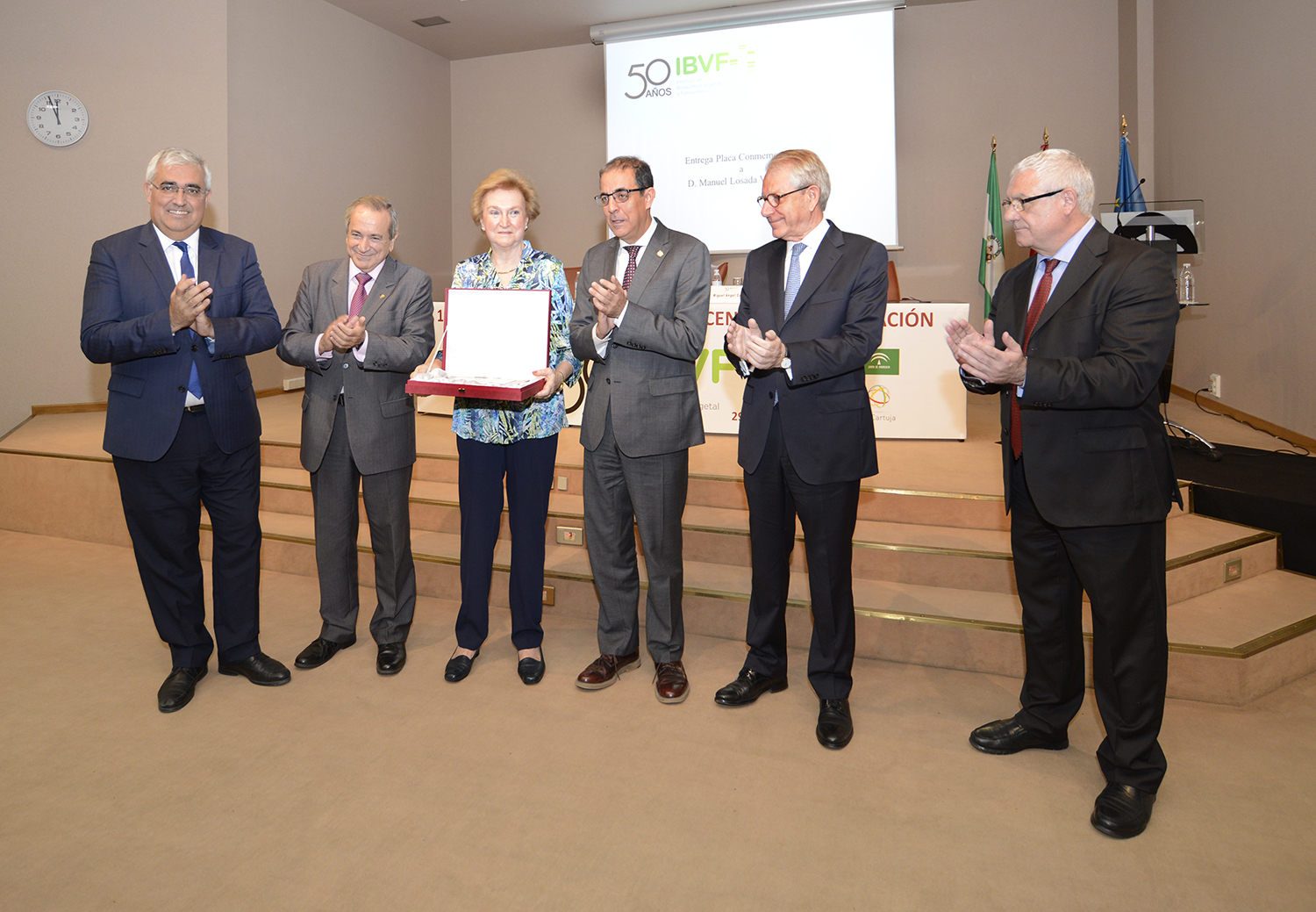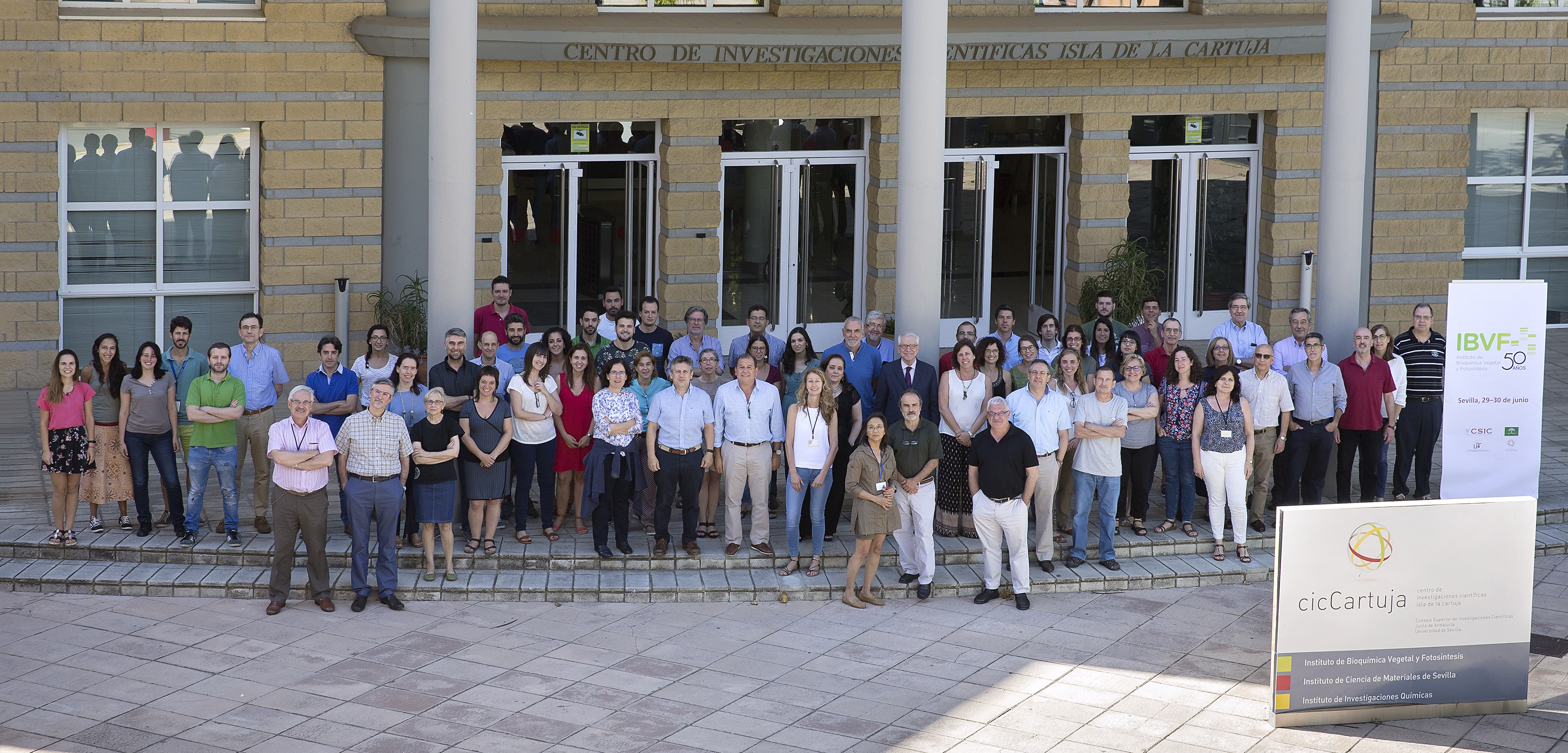Seville, June 30, 2017. The Institute of Plant Biochemistry and Photosynthesis (IBVF), part of the Isla de la Cartuja Scientific Research Center (cicCartuja), is commemorating the 50th anniversary of its foundation.
This morning, an event was held at cicCartuja, opened by the current director of the IBVF, Luis Carlos Romero, who made a brief historical tour of the origins of an institution that was created at the Biological Research Center of Madrid. Romero also reflected on the achievements made in these fifty years and appealed to the need to maintain scientific excellence.
A tour of the past without losing sight of the future
After Luis Carlos Romero, the former director of the IBVF, Miguel García Guerrero, spoke. A disciple of Losada Villasante, García also wanted to go through the history of the institution, whose beginnings were not easy due to bureaucratic, space and personnel limitations.
On the other hand, Antonio Ramírez de Arellano, Minister of Economy and Knowledge of the Andalusian Government, has highlighted the excellent work of the IBVF, remaining during these fifty years “at the forefront of knowledge”. Likewise, Arellano has stressed the importance of the Andalusian Plan for Research, Development and Innovation (PAIDI), a measure that contemplates the inclusion of excellence plans aimed at research.
The rector of the University of Seville, Miguel Ángel Castro, has delved into the importance of mixed centres, as has the president of the CSIC, Emilio Lora-Tamayo. The IBVF is a US-CSIC mixed centre and is part of the 53 that the CSIC has spread throughout Spain.
The IBVF, a centre of scientific research of excellence
Under the motto “1967-2017: Fifty years of teaching and research”, the IBVF began to take shape at the Biological Research Centre in Madrid. Thanks to the perseverance of Losada Villasante, in 1967, it moved to the building of the current Rectorate of the University of Seville, where it only had 200 m2 of space.
In 1976, a new move took place, this time to the Faculty of Biology of the Hispalense, a location where the researchers attached to the institute had more than 800 m2 at their disposal. Since 1996, the IBVF has been located in the cicCartuja, whose facilities were expanded in 2016.
The main lines of research of this institute focus on the study of the molecular bases of development in cyanobacteria and plants; Cell signalling and adaptation to environmental stress in photosynthetic organisms; gene expression and metabolic regulation in plant cells; bioelimination of atmospheric CO2 in the fight against climate change; and microalgae biotechnology for the production of biofuels and compounds of industrial interest.
The figure of Manuel Losada Villasante
The figure of Losada Villasante, who was unable to attend the event, was always present throughout the institutional event. His daughter María spoke on his behalf, accompanied by her mother, Antonia Friend, collecting a commemorative plaque and addressing a few words from her father to the audience.
Born in 1929 in Carmona (Seville), Losada Villasante is without a doubt one of the most brilliant scientists in our country. A disciple of Severo Ochoa, he travelled to the United States and Germany during the 1950s to complete his academic career. Upon his return, he was appointed Professor of Biochemistry at the University of Seville, a task that he carried out simultaneously with his research work focused on the mechanisms of photosynthesis and the direction of the Institute.
In 1995, Losada received the Prince of Asturias Award for Scientific and Technical Research for having carried out pioneering and essential research on the photosynthetic assimilation of nitrogen, a fundamental key to the development of life.






